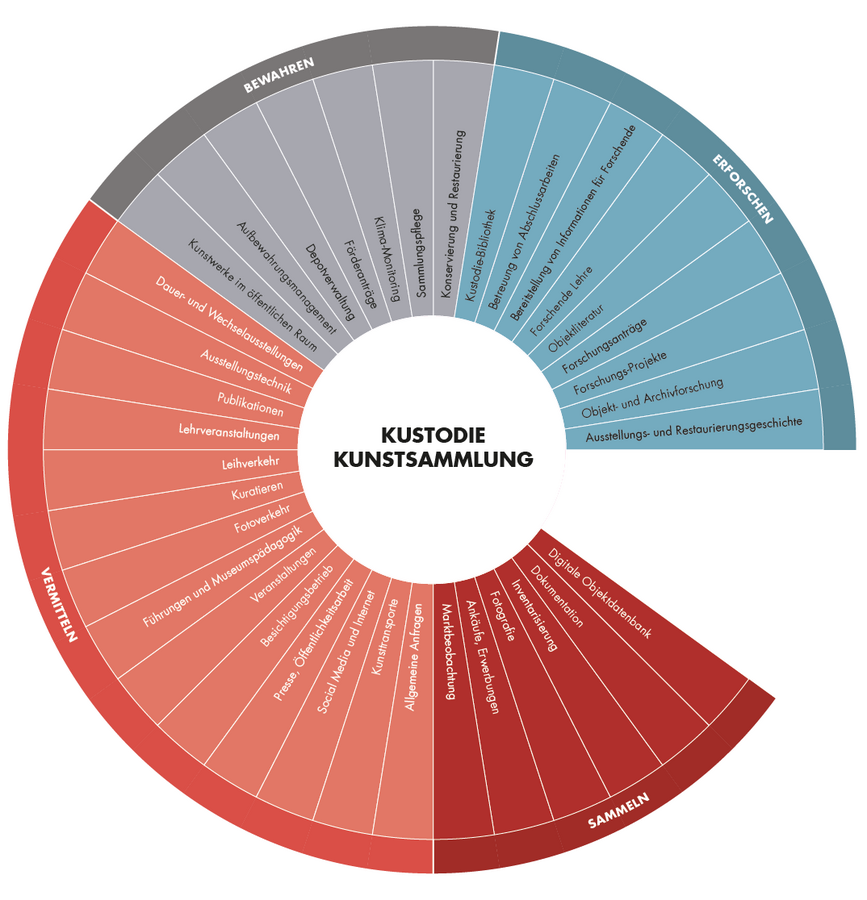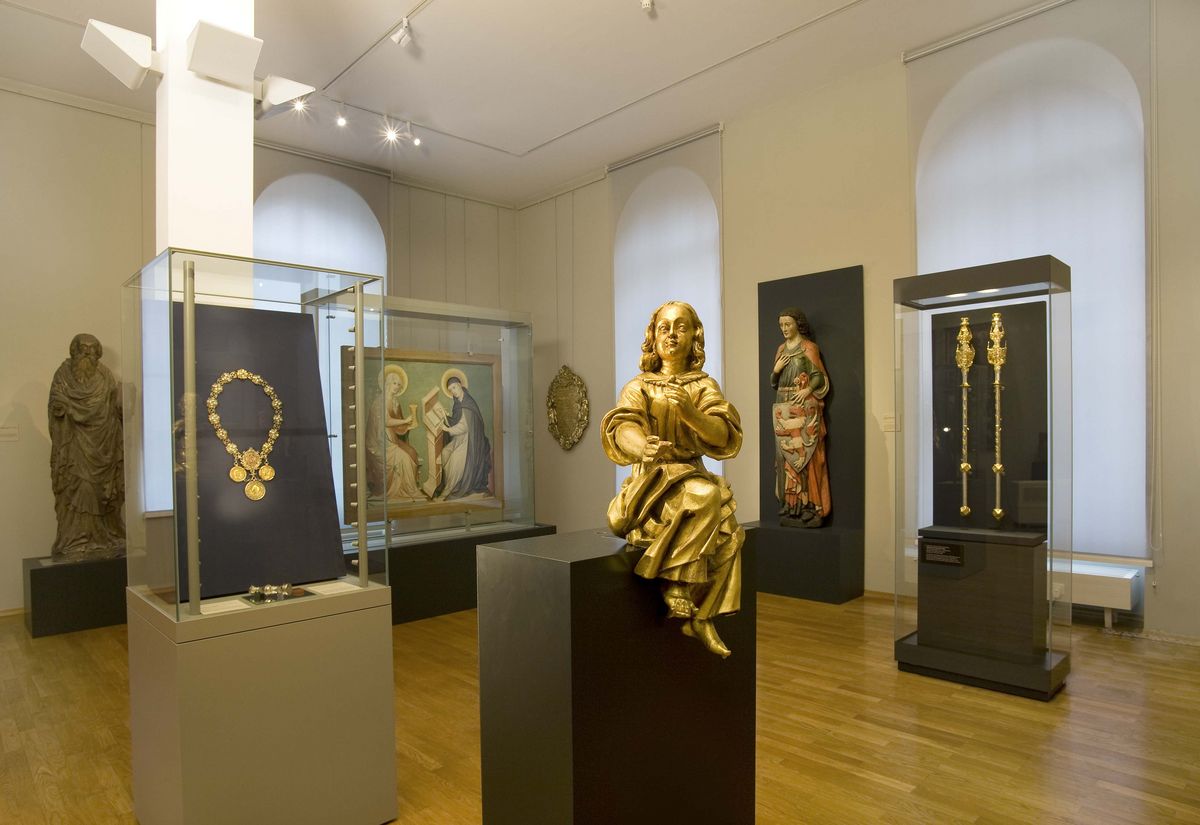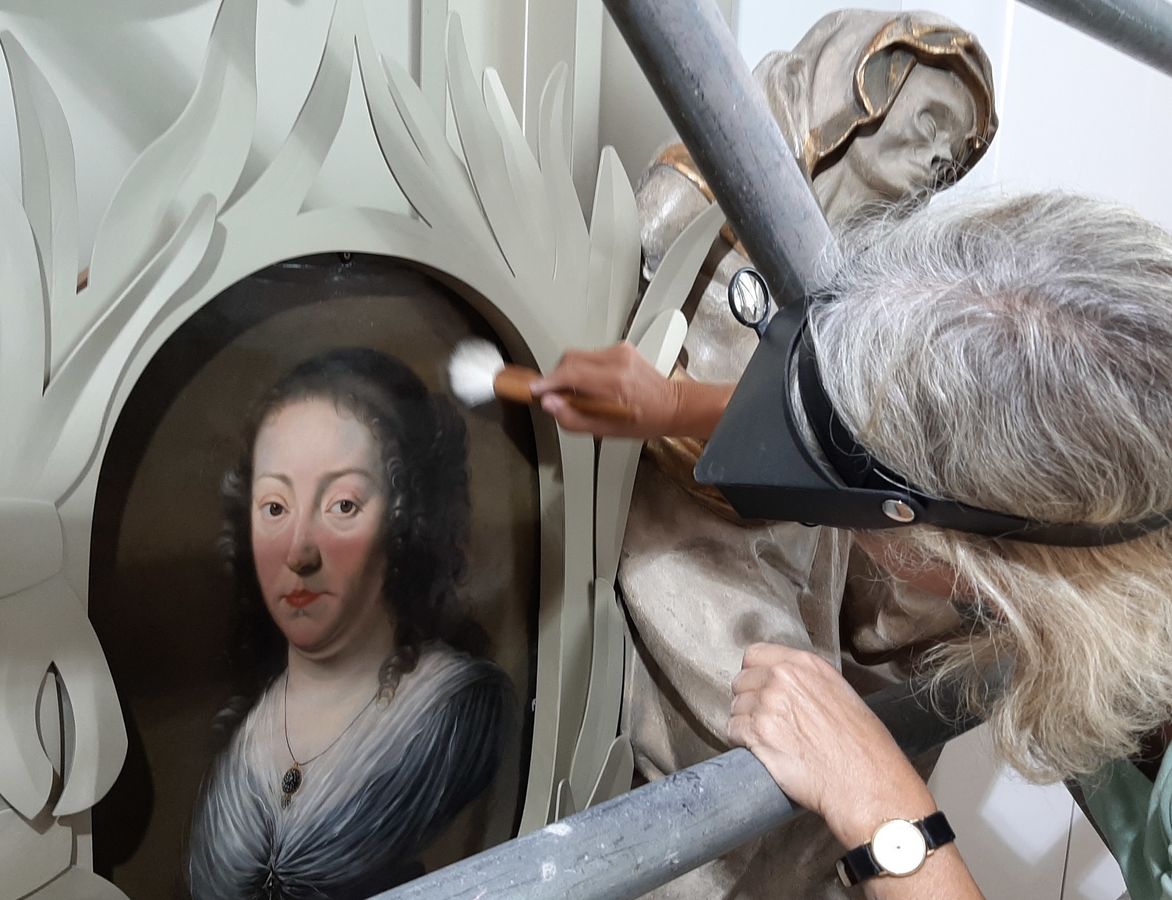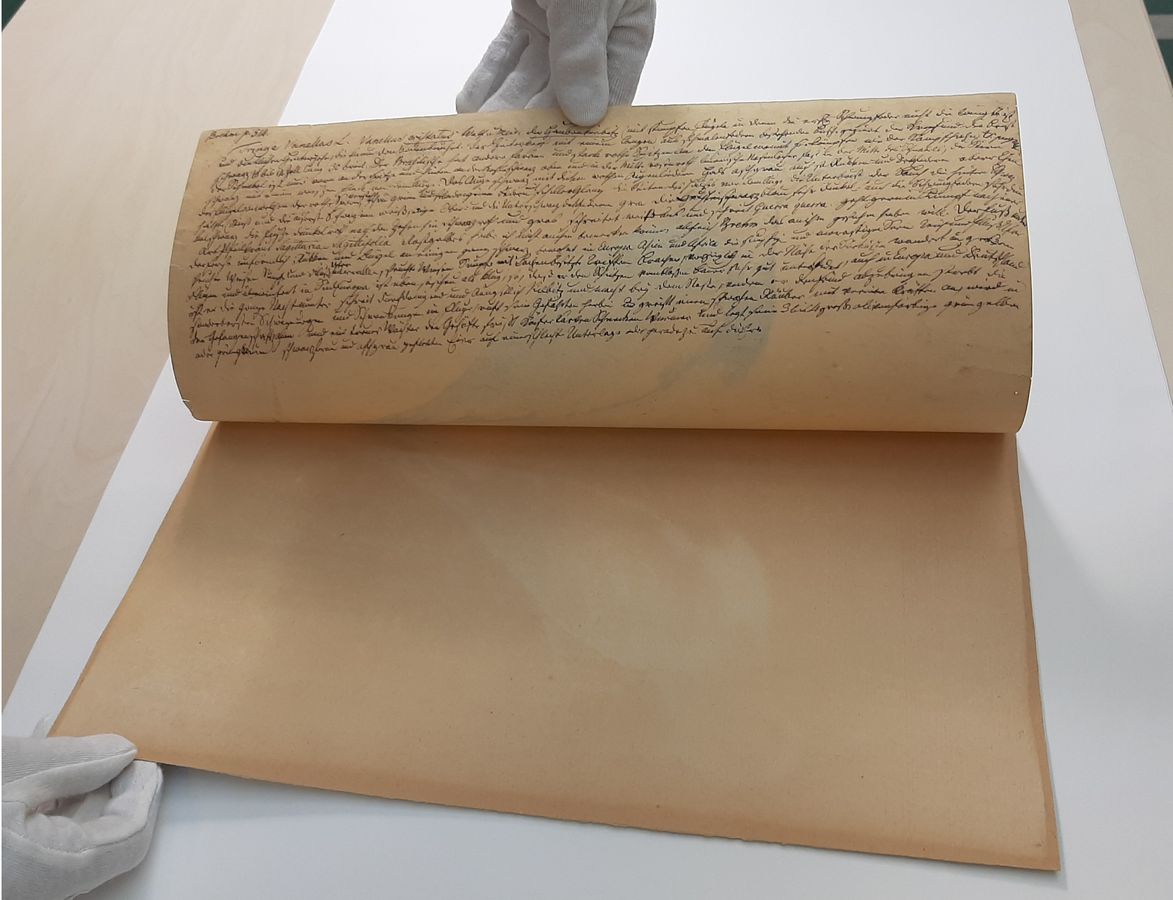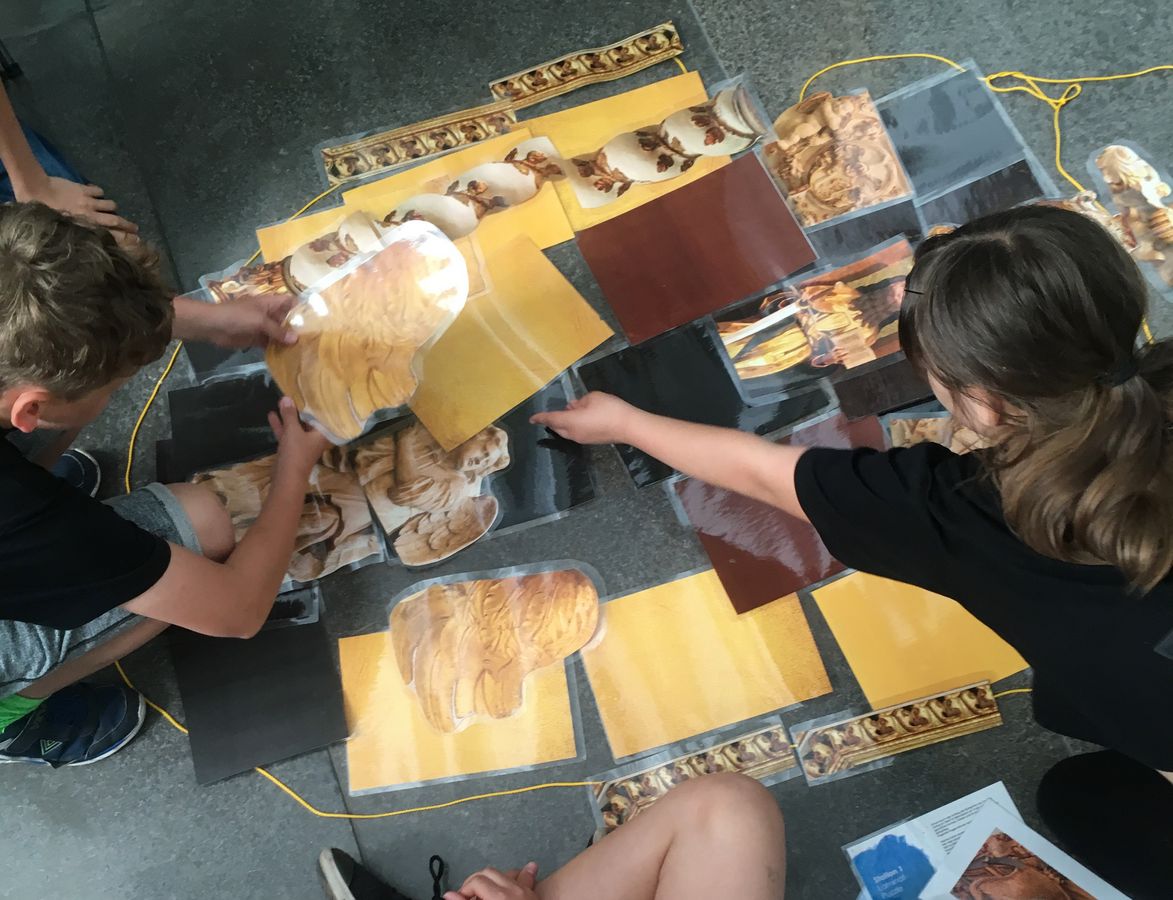As a central institution, we look after the University’s art collection and fulfil the four classic museum tasks of collecting, preserving, researching and communicating. The art collection is an ‘objectified memory’ of the University, making its history vivid and tangible.
Our basic tasks include taking an inventory of the collection, ensuring that it is properly stored and conserved. Other tasks are to research individual objects, to catalogue the collection through publications and an online database, and to share the works through special exhibitions, by displaying them in public spaces, and by using them in university teaching, especially in the subject of art history. We act as research infrastructure for external researchers. We also advise the University on matters of presentation and conservation in the field of monument preservation, for example with regard to art on buildings. For a long time, the care of the art collection was the responsibility of individual institutions; after the demolition of central buildings in 1968 threatened to destroy important holdings, the Kustodie was established in 1971 as a central institution under the rectorate with extensive powers.
The art collection managed by the Kustodie at Leipzig University was and is primarily focused on the 600-year history of the University. The collection includes paintings, sculptures, graphics, architectural fragments, arts and crafts objects as well as historical photographs, and dates from 1230 to the present day. Since its foundation in 1409, the University has always been a cultural institution, with works of art commissioned or donated for its representative needs. A group of medieval works of art, on the other hand, comes from the Dominican monastery, which was transferred to the University during the Reformation. Important collections are the epitaphs from the university church, the professors’ gallery of the University Library from the 17th and 18th centuries, the friendship gallery of the publisher Philipp Erasmus Reich, the scientific estate of the naturalist Taken as a whole, the collection paints a multifaceted picture of the University’s history and invites visitors to reflect on how it has grown over the centuries. At the same time, it also includes a large amount of GDR art, which still need to be studied in greater depth. Documenting losses is also one of the tasks of the collection.
Despite the lack of an acquisitions budget, the collection has recently been expanded to a modest but interesting extent, partly through donations and partly through purchases financed by donations.
Preservation is rightly considered a central task of museums: works of art must be protected from deterioration and preserved for future generations. The basis for this is proper storage in the art depot and careful presentation in exhibition rooms, where general conservation conditions in terms of humidity, temperature and light levels must be observed. In addition to proper storage, objects must be conserved and restored, otherwise individual works can often neither be shown in exhibitions nor made accessible for research and educational purposes. In this context, presenting the restored epitaphs in the Paulinum − Assembly Hall and University Church of St. Paul − was and still is a particular challenge. In view of the severe damage to the works, it is particularly important to maintain a constant indoor climate. However, openings in the glass wall that separates the -– air-conditioned – altar area from the – non-air-conditioned – assembly hall, which was installed to protect the objects, are a constant source of stress.
The scholarly value of a collection rests very substantially on the degree to which it has been researched. Only the scientific processing of the sources, the provenance, the process of creation, the questions of attribution and dating, the iconography and other art historical contexts establish the value of the artwork in question for further research. Interdisciplinary cooperation between art historians, restorers, art technologists, and other humanities disciplines has proven fruitful in the study of individual works. Particularly interesting are also scientific investigations, e.g. with X-rays, infrared reflectography, wood type determinations or dendrochronology: in the case of the wooden sculpture of Thomas Aquinas, the traditional dating around 1400 could thus be confirmed. The combination of art-historical and natural-scientific approaches established new research results on the origin of the so-called "Bohemian panel", on which probably two different painters worked. The transcription and translation of the epitaph inscriptions by Rainer Kößling and Doreen Zerbe also made a contribution to basic research in recent years. Numerous research results on the epitaphs in the course of the restoration campaign from 2002 to 2017 have yet to be written up. Interesting results on the genesis of the so-called Pauline frescoes were compiled and published by Albrecht Körber in the course of the restoration. In 2020, an art guide on the Paulinum was also presented. In recent years, the main focus of our work has been on conservation and restoration, but in the years to come, research will once again be increasingly given its due.
At the same time, the art collection of Leipzig University is also successfully used in art historical teaching. The new findings are to be made public in the form of publications, exhibitions and Internet contributions.
Furthermore, one of the our fundamental tasks is mediation in all its facets. Wherever possible, works of art are made accessible to the public. On the one hand, the individual work of art is explained by means of an object label. On the other hand, works of art are inserted into superordinate contexts to the best of our ability. The permanent exhibition Art Collection in the Rectorate Building, temporary exhibitions in the Gallery in the Neues Augusteum, and the presentation Art on Campus at Augustusplatz provide visitors with a variety of opportunities to explore the University's art holdings on site. Numerous works of art are also on display in the university library and on the Jahnallee campus. An object database on the Internet opens up digital access with far-reaching research possibilities. Major and minor publications are produced for individual exhibition and restoration projects in order to introduce the works to scholarly discourse. At the same time, public lectures, guided tours and other events are offered. Museum educational programs explain the background and context of the art objects to interested visitors.
In addition, the collection has great potential as an art historical teaching collection. For this reason, employees of the Kustodie are intensively involved in teaching at the Institute of Art History. The aim is to introduce students to the original artwork in the form of seminars and practical exercises and to provide practice-oriented insights into the professional field of museums.
In addition to permanent and special exhibitions at our various locations and on a wide variety of topics, we are also increasingly offering digital mediation formats.
On the Youtube channel of Leipzig University, on our own Kustodie Youtube channel, our Instagram account and our Facebook page, we present individual collection objects, report on news and provide special insights into the art collection of the University of Leipzig with formats such as the series "My Favorite Epitaph".
